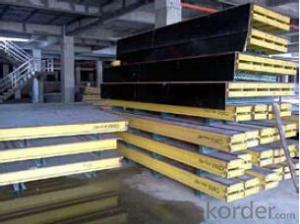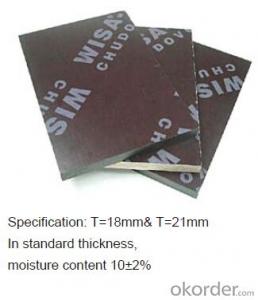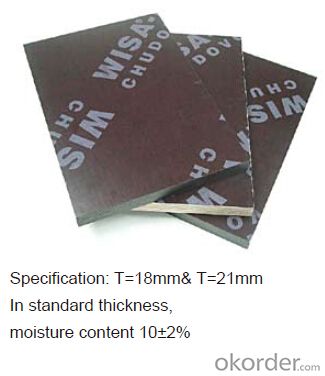Plywood-Formwork system for formwork and scaffolding
- Loading Port:
- Tianjin
- Payment Terms:
- TT OR LC
- Min Order Qty:
- 50 m²
- Supply Capability:
- 1000 m²/month
OKorder Service Pledge
Quality Product, Order Online Tracking, Timely Delivery
OKorder Financial Service
Credit Rating, Credit Services, Credit Purchasing
You Might Also Like
Plywood --- make perfect concrete surface
WISA-Form Birch is a coated special plywood using in the formwork systems where high
requirements are set on the concrete surface and the times of reuses.
With CNBM timber beam & WISA plywood, the formwork is low weight but high load capacity, it is
widely used in construction.
Characteristics:
◆ Component with high standardization.
◆ Assembling in site, flexible application.
◆ Light weight, easy transportation and storage.
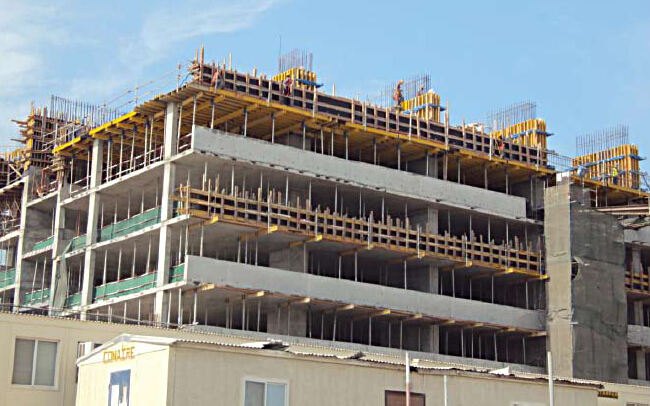
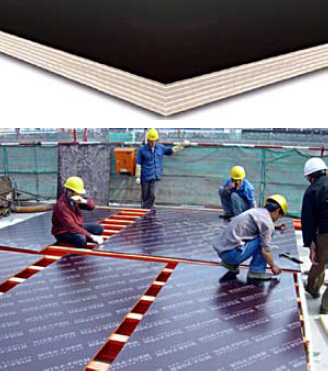
- Q: How does steel formwork accommodate for different concrete compaction methods?
- Steel formwork is an adaptable construction material capable of accommodating various concrete compaction methods with ease. Its strength and rigidity are key advantages, allowing it to withstand the forces exerted during compaction techniques. When utilizing compaction methods such as hand tamping or a vibrating poker, steel formwork provides a stable and secure surface for applying the necessary forces. The rigid and tightly connected steel panels ensure that the concrete remains in place and maintains its shape throughout the compaction process. This facilitates efficient and effective compaction, resulting in a uniform and high-quality concrete finish. In instances where mechanical compaction methods such as plate compactors or vibrating rollers are employed, steel formwork readily adapts to the added weight and vibrations. The robustness of the steel panels enables them to support heavy equipment and absorb vibrations without deformation or cracking. This guarantees even compaction of the concrete, eliminating any potential weak spots or voids. Moreover, steel formwork can be easily adjusted and modified to accommodate diverse compaction methods. The panels can be effortlessly repositioned or removed to allow proper access and movement for compaction equipment. Additionally, steel formwork can be tailored to specific shapes and sizes to meet the requirements of the compaction method employed. In summary, steel formwork offers a dependable and flexible solution for accommodating various concrete compaction methods. Its strength, rigidity, and adaptability make it an ideal choice for construction projects that necessitate efficient and effective compaction techniques.
- Q: What are the different types of formwork release agents used with steel formwork?
- Steel formwork can be used with various types of formwork release agents. These agents are applied to the formwork surface before pouring concrete to prevent sticking and ease removal after curing. A commonly used formwork release agent for steel formwork is petroleum-based. It consists of petroleum oils and additives, creating a thin lubricating film on the formwork surface. This film reduces friction between the formwork and concrete, facilitating damage-free formwork removal. Another option for steel formwork is water-based release agent. It contains water, surfactants, and additives, forming a barrier between the formwork and concrete to prevent adhesion. Water-based agents are preferred when environmental concerns or safety considerations make petroleum-based agents less suitable. Apart from petroleum-based and water-based agents, there are specialty formwork release agents available for steel formwork. These agents may be tailored for specific applications or performance requirements. For instance, high-performance release agents are designed to offer superior release in challenging conditions like high temperatures or humidity. Additionally, there are agents specifically formulated for use with certain concrete types, such as self-consolidating or high-strength concrete. Ultimately, selecting the appropriate formwork release agent for steel formwork depends on project requirements, environmental factors, and personal preferences. Careful selection and correct application of the release agent are crucial for successful formwork removal and achieving the desired concrete finish.
- Q: Can steel formwork be used for curved or complex structures?
- Yes, steel formwork can be used for curved or complex structures. Steel formwork is highly versatile and can be easily shaped and adjusted to create various curved or complex shapes. Its strength and durability make it suitable for withstanding the pressure and forces exerted during the construction process of such structures.
- Q: What are the different types of corner solutions available for steel formwork?
- Steel formwork offers various types of corner solutions, each with its own advantages and applications. 1. For external corners in concrete structures, L-shaped or angled brackets are commonly used. These brackets are easy to install and provide a clean and sharp finish. They find frequent use in building construction, particularly for walls and columns. 2. Internal corners in concrete structures can also be formed using L-shaped or U-shaped brackets. Similar to external corner solutions, they are widely used in the construction of walls, slabs, and beams. 3. Adjustable corner solutions are highly versatile, allowing for adjustable angles and dimensions. They are designed to accommodate complex structures or irregular shapes. These solutions are often employed for curved walls, circular columns, and other unique architectural features. 4. Hinged corner solutions are specialized brackets that facilitate easy removal of formwork once the concrete has cured. With hinges, the formwork can be opened and closed, providing quick and efficient access to the concrete surface. Hinged corner solutions are commonly used in applications where frequent access to the concrete surface is necessary, such as tunnels or underground structures. 5. Reinforced corner solutions are specifically designed to provide additional strength and support to the corners of concrete structures. They incorporate steel bars or plates to enhance structural integrity and durability. Reinforced corner solutions are frequently utilized in high-rise buildings, bridges, and other heavy-duty structures. Ultimately, the choice of corner solution depends on the specific requirements of the construction project, including the desired finish, structural integrity, and ease of installation and removal. It is crucial to consider these factors and consult with a structural engineer or formwork specialist to determine the most suitable corner solution for a particular application.
- Q: What are the different types of steel formwork supports?
- There are several types of steel formwork supports, including adjustable steel props, steel beams, steel frames, and steel tubes.
- Q: How does steel formwork handle different concrete surface preparation techniques?
- Steel formwork is a versatile and durable solution for concrete construction projects, and it can easily handle different concrete surface preparation techniques. Whether the concrete surface requires a smooth finish, a rough texture, or any other specific surface preparation, the steel formwork can adapt accordingly. For smooth finishes, steel formwork provides a rigid and flat surface that allows for precise leveling and alignment. The steel panels are designed to be smooth and seamless, ensuring a uniform concrete surface without any imperfections. This is especially beneficial for projects that require a high-quality finish, such as architectural structures or decorative elements. On the other hand, if a rough texture is desired, steel formwork can accommodate various techniques to achieve the desired result. The formwork can be modified to incorporate patterns or textures, such as wood grain or stone-like finishes, by using specialized liners or inserts. These liners can be attached to the steel panels, creating the desired texture on the concrete surface. Additionally, steel formwork can handle other concrete surface preparation techniques like shot blasting or acid etching. Shot blasting is a process where steel balls are propelled onto the concrete surface, removing any contaminants and creating a rough texture. Acid etching involves applying acidic solutions to the concrete, which creates a chemical reaction that removes a thin layer of the surface, providing a textured finish. Steel formwork can withstand the impact of shot blasting and the corrosive effects of acid etching without being damaged. Furthermore, steel formwork is highly adaptable and can be easily customized to meet specific project requirements. If a particular surface preparation technique is needed, the steel formwork can be designed to accommodate it. This flexibility allows for a wide range of concrete surface finishes to be achieved using steel formwork. In conclusion, steel formwork is capable of handling different concrete surface preparation techniques, whether it is for smooth finishes, rough textures, or any other specific requirements. Its versatility, durability, and adaptability make it an excellent choice for concrete construction projects that demand various surface finishes.
- Q: How does steel formwork contribute to the overall energy efficiency of the building?
- There are several ways in which steel formwork contributes to the overall energy efficiency of a building. Firstly, its high durability and long lifespan mean that it can be reused multiple times for different construction projects. This reduces the need for new formwork materials, which in turn decreases the energy and resources required for manufacturing and transportation. Moreover, steel formwork allows for more precise and accurate construction, resulting in tighter and better-insulated structures. This improved insulation helps to minimize heat transfer and air leakage, thus reducing energy consumption for heating and cooling. The solid and airtight barrier created by steel formwork contributes to a more energy-efficient building envelope. Additionally, the use of steel formwork enables the construction of complex shapes and designs, giving architects the opportunity to incorporate energy-efficient features such as passive solar heating, natural ventilation, and daylighting strategies. These design elements can greatly reduce the reliance on artificial lighting, heating, and cooling systems, further enhancing the overall energy efficiency of the building. Finally, steel formwork is often combined with other sustainable building materials, such as recycled steel or eco-friendly concrete mixtures. This combination of materials enhances the overall sustainability of the construction process and reduces the environmental impact associated with traditional formwork materials. In conclusion, steel formwork contributes to the overall energy efficiency of a building through its durability, precision construction, ability to support energy-efficient designs, and use of sustainable materials. By incorporating steel formwork into construction projects, builders can help create more energy-efficient buildings, reducing their environmental footprint and promoting sustainable development.
- Q: Can steel formwork be used for both residential and industrial construction projects?
- Yes, steel formwork can be used for both residential and industrial construction projects. Steel formwork is highly versatile and can withstand heavy loads, making it suitable for various construction applications. Its durability and strength make it ideal for use in both residential and industrial settings.
- Q: What are the different types of joints used with steel formwork?
- Steel formwork joints in construction projects can be categorized into different types, each serving a specific purpose. These joints are crucial for ensuring stability, strength, and ease of assembly and disassembly. Here are some commonly used joints: 1. Straight Sections: For connecting straight sections of formwork, a simple butt joint is employed, where the edges of two steel formwork sections are placed together. 2. Longer Sections: To provide additional strength for longer sections of formwork, a lap joint is used. In this joint, one formwork section overlaps another, creating a strong connection. 3. Adjustable and Repositionable: A clamped joint utilizes clamps or bolts to securely fasten the formwork sections together. This joint allows for easy adjustment and repositioning of the formwork. 4. Vertical and Horizontal Connections: A wedge joint is commonly used to connect vertical and horizontal formwork sections. It involves inserting a wedge-shaped piece into a slot to create a secure connection. 5. Large and Heavy Components: A flanged joint is created by using flanges or plates on the formwork sections, which overlap and are bolted together. This joint provides a strong connection and is ideal for large and heavy formwork components. 6. Quick Assembly and Disassembly: For quick and easy assembly and disassembly of formwork sections, a pin joint is utilized. Pins or dowels are used to connect the formwork sections securely. Selecting the appropriate joint type is essential and should be based on the specific requirements of the construction project. Factors such as formwork design, load-bearing capacity, ease of assembly, and reusability are crucial in determining the suitable joint choice.
- Q: Can steel formwork be used for curved or irregularly shaped structures?
- Yes, steel formwork can be used for curved or irregularly shaped structures. Steel formwork is highly flexible and can be easily customized to match the desired shape or form of the structure. Its strength and durability make it suitable for various construction projects, including those that involve unique or unconventional designs.
Send your message to us
Plywood-Formwork system for formwork and scaffolding
- Loading Port:
- Tianjin
- Payment Terms:
- TT OR LC
- Min Order Qty:
- 50 m²
- Supply Capability:
- 1000 m²/month
OKorder Service Pledge
Quality Product, Order Online Tracking, Timely Delivery
OKorder Financial Service
Credit Rating, Credit Services, Credit Purchasing
Similar products
Hot products
Hot Searches
Related keywords
